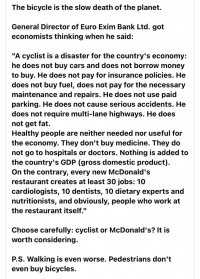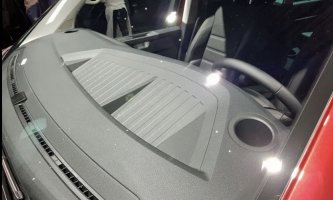New EU rules have been introduced that require manufacturers of electrical goods such as fridges and televisions to make their products repairable for at least 10 years after first coming to market.
The rules are designed to enshrine circular economy practices into law and reinforce consumer rights to repair products.
Manufacturers or importers will now be obliged to make a range of essential parts such as motors, pumps, shock absorbers and springs available to professional repairers for up to ten years after the last unit of a specific model has been placed on the EU market.
For end-user consumers, manufacturers must make certain spare parts available for several years after a product is taken off the market - products such as doors or hinges and seals, which are suitable for DIY action. The maximum delivery time for all these pieces will be 15 working days after ordering.
The new rules are part of the EU’s efforts to cut the environmental footprint of manufactured goods and make them more repairable.
“This is a really big step in the right direction” said Daniel Affelt of the environmental group BUND-Berlin, which runs several ‘repair cafés’ that help customers repair their goods.
“If you need specialist tools or have to break open the device, then you can’t repair it,” he added. “People want to repair their appliances. When you tell them that there are no spare parts for a device that’s only a couple of years old, then they are obviously really frustrated by that.”
As well as parts being made available, products will also need to come with repair manuals and built in a way that they can be easily dismantled using conventional tools.
German environment minister Svenja Schulze has proposed that, in the future, manufacturers may be forced to state how long a product is expected to work for and repair it if it breaks down earlier in order to encourage companies to build more durable products.
The new rules come as part of a brand-new version of the widely recognised EU energy labels. The new labels will initially apply to four product categories: fridges and freezers, dishwashers, washing machines, and television sets (and other external monitors). New labels for light bulbs and lamps with fixed-light sources will follow in September 2021, with other products expected to follow in the coming years.
With more and more products achieving high ratings such as A+, A++ or A+++ according to the previous scale, the most significant change is to return to a simpler A-G scale which is stricter and designed so that very few products are initially able to achieve the ‘A’ rating, leaving space for more efficient products to be included in the future.
EU energy commissioner Kadri Simson said: “The original energy label has been very successful, saving an average household in Europe several hundred euros per year and motivating companies to invest into research and development.
“Until the end of February, over 90 per cent of products were labelled either A+, A++ or A+++. The new system will be clearer for consumers and ensure that businesses continue to innovate and offer even more efficient products. This also helps us to reduce our greenhouse gas emissions.”
With the UK now out of the EU, the new rules will not directly affect it, although British customers may still see the same labelling system on products offered for sale in the UK.
In November 2020, the Environmental Audit Committee said the UK
needs to do more to tackle its growing e-waste problem, including improved rules around repairing. Data analysis has also shown that
UK households rank second-lowest across Europe for recycling e-waste.


















